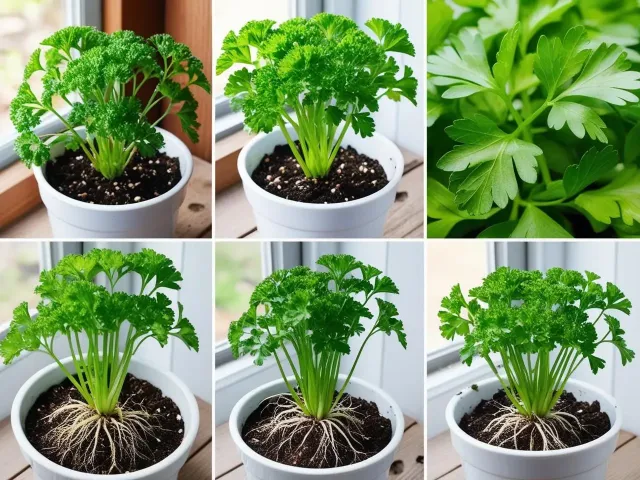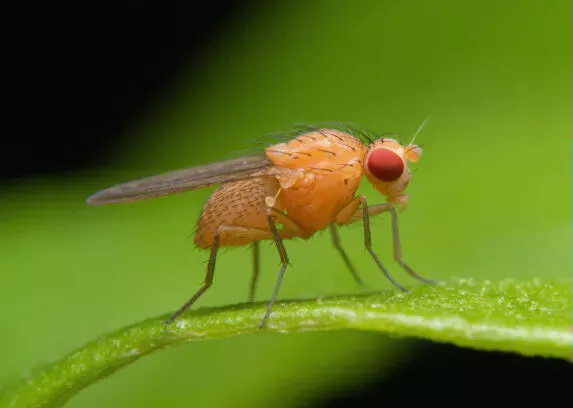Published on May 20, 2025
Last updated: May 20, 2025 · ⏱ 3 min read
How to Grow Parsley Indoors All Year Long

The Joy of Growing Parsley Indoors
Growing parsley on your windowsill is more than just a gardening project; it's an enriching experience that connects you with nature and enhances your culinary endeavors. This versatile herb is not only easy to grow but also adds a burst of flavor to various dishes. Whether you're a seasoned gardener or a beginner, cultivating parsley indoors can be a delightful addition to your home.
Choosing the Right Container for Parsley
The first step in growing parsley is selecting the right container. Look for pots that have drainage holes at the bottom to prevent water from accumulating, which can lead to root rot. A pot with a diameter of at least 6 to 8 inches is ideal, allowing enough space for the parsley roots to grow. You can opt for traditional terracotta pots, plastic containers, or even recycled items like old jars, as long as they provide adequate drainage.
Selecting the Right Soil
Next, you need to choose the right soil for your parsley. A well-draining potting mix is essential for healthy growth. You can either purchase a pre-mixed potting soil or create your own by combining equal parts of peat moss, perlite, and compost. This combination provides the nutrients parsley needs while ensuring good drainage. Avoid using garden soil, as it can be too heavy and may contain pests or diseases.
Planting Seeds or Seedlings
Once you have your container and soil ready, it’s time to plant your parsley. You can either start with seeds or purchase seedlings from a local nursery. If you're planting seeds, sprinkle them evenly on the surface of the soil and lightly cover them with about a quarter-inch of soil. Keep the soil moist but not soggy, as parsley seeds require consistent moisture to germinate. If using seedlings, gently remove them from their nursery pots and plant them in your prepared container, ensuring they are planted at the same depth they were growing in previously.
Providing the Right Light Conditions
Parsley thrives in bright, indirect sunlight. Aim to place your container near a south or west-facing window where it can receive at least 4 to 6 hours of light each day. If natural light is limited, consider using grow lights to supplement the light requirements. Position the lights about 6 to 12 inches above the plants and keep them on for around 12 to 16 hours a day to promote healthy growth.
Watering Your Parsley
Watering is a crucial aspect of growing parsley. The soil should remain consistently moist but never waterlogged. Check the top inch of the soil; if it feels dry, it's time to water your plants. When watering, do so thoroughly until water drains out of the bottom of the pot. Be cautious not to let the parsley sit in standing water, as this can lead to root rot. Using a moisture meter can help you gauge when to water accurately.
Fertilizing for Optimal Growth
To ensure your parsley grows strong and healthy, consider fertilizing it every 4 to 6 weeks during the growing season. A balanced, water-soluble fertilizer will provide the necessary nutrients for optimal growth. Dilute the fertilizer according to package instructions and apply it during your regular watering routine. Be careful not to over-fertilize, as this can lead to excessive leaf growth and diminished flavor.
Pest Management and Troubleshooting
While growing parsley indoors, you may encounter common pests such as aphids or spider mites. Regularly inspect your plants for signs of infestation, such as discolored leaves or webbing. If you notice any pests, you can treat them with insecticidal soap or neem oil, both of which are effective and safe for indoor use. Additionally, maintaining proper air circulation and not overcrowding your plants can help prevent pest problems.
When and How to Harvest Parsley
Knowing when to harvest your parsley is essential for ensuring a continuous supply of fresh leaves. You can begin harvesting once the plants have reached a height of about 6 inches. Use sharp scissors or garden shears to snip off the outer leaves, leaving the inner leaves to continue growing. This method not only promotes bushier growth but also ensures that you have fresh parsley available for your culinary needs. Harvesting regularly encourages the plant to produce more leaves, so don’t hesitate to incorporate parsley into your meals!
Creative Uses for Fresh Parsley
Fresh parsley is a culinary superstar, adding flavor and nutrition to a wide range of dishes. You can use it in salads, soups, sauces, and as a garnish for meats and fish. It pairs particularly well with garlic, lemon, and olive oil, making it a staple in Mediterranean cooking. Additionally, parsley is packed with vitamins A, C, and K, making it a nutritious addition to your meals. Consider blending it into smoothies or using it in pesto for a flavorful twist.
Storing Fresh Parsley
If you find yourself with an abundance of parsley, storing it properly is essential to maintain its freshness. One effective method is to place the parsley stems in a glass of water, covering the leaves with a plastic bag, and storing it in the refrigerator. This can keep the parsley fresh for up to a week. Alternatively, you can chop the parsley and freeze it in ice cube trays with a little water or olive oil, creating convenient portions for future use.
Conclusion
By following these simple steps, you can successfully grow parsley right on your windowsill. Choose the right container, prepare your soil, and plant your seeds or seedlings with care. Ensure your parsley gets plenty of light and moisture, and don’t forget to regularly harvest the outer leaves to keep it thriving. With a little attention, you'll enjoy fresh parsley for your culinary creations, right at your fingertips! Happy gardening!

Written by Soufyan from GrowToGrub
Soufyan is a gardening educator and founder of GrowToGrub. Through simple guides, easy recipes, and practical life hacks, he helps everyday growers turn small spaces into sustainable, delicious, and chemical-free living.

